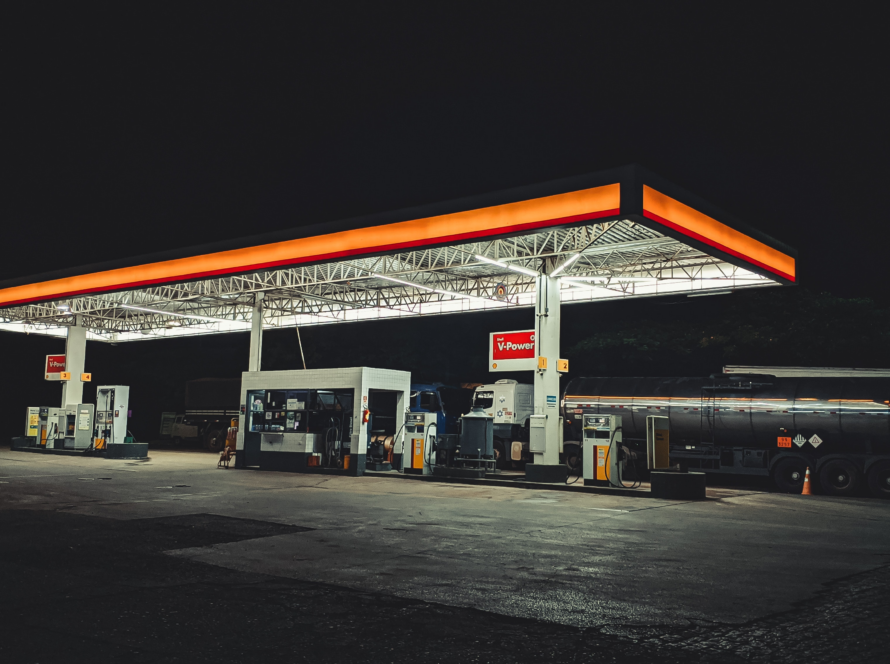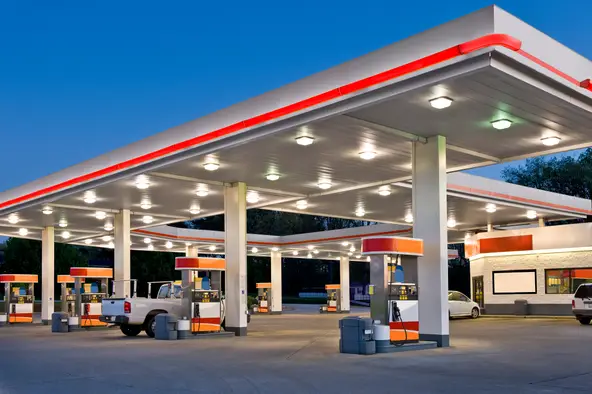Welcome to an in-depth exploration of safeguarding underground storage tanks (USTs) in the petroleum bulk storage industry. Whether you’re a facility owner in New York planning expansion or a local business owner aiming to enhance your storage practices, this guide is your roadmap to environmental responsibility and compliance. At Zambrano Enterprises, LLC, we bring extensive expertise to the table. Join us as we unveil the world of UST safeguards, precision, and eco-consciousness.
Our commitment to precision and eco-conscious practices has earned us a reputation for excellence in petroleum bulk storage solutions. In this guide, we’ll cover essential equipment and techniques, ensuring your USTs remain safe, compliant, and environmentally responsible.
Underground storage tanks are the lifeblood of many petroleum storage facilities. To safeguard these vital assets, we employ a range of advanced equipment and methods:
Double Wall Fiberglass Tanks: Robust and Reliable
When it comes to protecting your underground storage tanks (USTs) from leaks and spills, double-wall fiberglass tanks stand as a robust and reliable first line of defense. Here’s why they are a cornerstone of petroleum storage safety:
Primary Containment: The inner wall of these tanks holds the petroleum product, while the outer wall serves as secondary containment. In the event of a leak or breach in the inner wall, the outer wall prevents the escaped product from reaching the environment. This dual-wall system significantly reduces the risk of environmental contamination.
Lightweight and Durable: Double-wall fiberglass tanks are lightweight compared to alternative materials like steel, making installation and maintenance more manageable. Additionally, they are highly durable and corrosion-resistant, ensuring a long lifespan and minimal maintenance requirements.
Product Distinguishing Sensors: One remarkable feature of double-wall fiberglass tanks is the incorporation of product distinguishing sensors. These sensors are strategically placed within the tank sump and are designed to differentiate between water and petroleum products. When they detect any liquid presence in the sump, they promptly provide alerts. This early warning system is crucial in preventing potential issues and responding swiftly to safeguard both the environment and your investment.
Sump Leak Sensors: Your Early Warning System
Sump leak sensors are a pivotal part of UST safeguarding, acting as your early warning system to protect against leaks and spills. Here’s why these sensors are indispensable:
Strategic Placement: These state-of-the-art sensors are strategically placed within the tank sump, a critical area in UST systems. The sump is designed to capture any liquids that may accumulate due to leaks or spills.
Detecting Liquid Presence: Sump leak sensors are highly sensitive and capable of detecting the presence of any liquid, whether it’s water or petroleum product. This ability to distinguish between different liquids is essential for early leak detection.
Rapid Alerts: When sump leak sensors detect liquid presence, they trigger rapid alerts. These alerts provide operators with immediate notifications, enabling quick responses to potential issues. Swift action can prevent minor incidents from escalating into costly and environmentally damaging problems.
Interstitial Monitoring: Detecting Tiniest Leaks
Interstitial monitoring is a sophisticated technique that focuses on the space between a UST’s inner and outer walls. Here’s why it’s vital:
Continuous Monitoring: The space between the tank’s walls, known as the interstitial space, is continuously monitored for any signs of leaks. Even the tiniest leaks that may go unnoticed otherwise are promptly identified.
Brine Fluid Method: One highly effective method employed in interstitial monitoring is the use of brine fluid. Brine, a mixture of salt and water, is used to fill the interstitial space between the tank walls. It is an excellent conductor of electrical current and is highly sensitive to the presence of liquids.
How It Works: In this method, electrodes are placed within the brine fluid. When a leak occurs and petroleum or another liquid escapes into the interstitial space, it disrupts the electrical conductivity of the brine. This disruption is quickly detected by the electrodes, triggering an alarm.
Early Leak Detection: Interstitial monitoring with brine fluid serves as an early leak detection system. By catching leaks at their inception, it prevents them from developing into more significant issues, minimizing the risk of environmental contamination and financial losses.
The use of brine fluid in interstitial monitoring adds an extra layer of sensitivity and precision, ensuring that even the tiniest leaks are swiftly identified and addressed. This advanced technique underscores our commitment to maintaining the highest standards of safety and environmental responsibility in underground petroleum storage.
High-Level Sensors: Preventing Overfill
High-level sensors play a critical role in preventing overfilling of USTs. Here’s why they are essential:
Monitoring Fill Levels: High-level sensors monitor the tank’s fill level. When the tank approaches its capacity, these sensors trigger alarms or automatic shutoff mechanisms.
Preventing Spills: By preventing overfilling, high-level sensors ensure that spills do not occur during the refilling process. This safeguards both the environment and the integrity of your storage infrastructure.
Flapper Valves: Controlling Petroleum Flow
Flapper valves are integral components within UST systems that control the flow of petroleum. Here’s why they are crucial:
Directional Control: Flapper valves ensure that petroleum flows only in the intended direction, preventing backflow or spillage.
Maintaining Flow Integrity: By maintaining the integrity of petroleum flow, flapper valves contribute to safe and efficient operations, reducing the risk of leaks or mishaps.
Line Leak Detectors: Monitoring Connecting Pipes
Line leak detectors are responsible for constant monitoring of the pipes connecting the various USTs in a storage system. Here’s why they are indispensable:
Continuous Monitoring: These detectors continuously monitor the pipes for any signs of leaks or irregularities, ensuring that any issues are promptly identified.
Preventing Widespread Leaks: By identifying leaks in connecting pipes early on, line leak detectors prevent the widespread release of petroleum products, reducing the potential for environmental harm.
In-Tank Monitoring Consoles: Real-Time Information
In-tank monitoring consoles provide real-time information about the condition of USTs. Here’s why they are essential:
Real-Time Data: These consoles offer real-time data on parameters like temperature and pressure within the tank. This data allows operators to closely monitor the tank’s condition.
Early Issue Detection: By detecting deviations from normal operating conditions early, in-tank monitoring consoles help operators identify issues before they escalate, enabling informed decision-making and timely interventions.
Ensuring the safety and environmental responsibility of underground storage tanks requires a combination of advanced equipment and vigilant monitoring. These components, including double-wall fiberglass tanks, sump leak sensors, interstitial monitoring, high-level sensors, flapper valves, line leak detectors, and in-tank monitoring consoles, work together to protect both your facility and the environment. Trust in these safeguards and the expertise of Zambrano Enterprises, LLC to keep your petroleum storage solutions secure and compliant.
Commitment to Compliance
Navigating complex regulations is essential in the petroleum storage industry. Compliance isn’t just a legal requirement; it’s a commitment to environmental preservation:
Our team at Zambrano Enterprises, LLC possesses comprehensive knowledge of local, state, and federal regulations. We ensure that your facility adheres to these standards, eliminating the risk of penalties and environmental harm.
Securing permits for petroleum storage can be challenging. We specialize in this process, making it as efficient as possible, saving you time and resources.
Should your facility encounter compliance challenges, our experts work diligently to resolve infractions swiftly and effectively, minimizing disruptions and maintaining environmental responsibility.
Our commitment to environmental responsibility extends beyond compliance:
We choose eco-friendly materials, design energy-efficient systems, and implement waste reduction strategies, aligning our projects with sustainability goals.
Client Satisfaction
At Zambrano Enterprises, LLC, we prioritize client satisfaction. Our strong track record is a testament to our dedication to meeting industry standards while keeping your facility eco-conscious.
Protecting your underground storage tanks is not just a matter of compliance; it’s an investment in environmental preservation, safety, and financial security. Zambrano Enterprises, LLC stands ready to assist you in achieving these goals.
Whether you’re planning expansion in the bustling metropolis of New York or aiming to enhance your local business’s storage practices, Zambrano Enterprises, LLC is your trusted partner. Contact us today to discover how we can tailor our services to meet your specific needs, ensuring your petroleum storage facility remains safe, compliant, and environmentally responsible.





